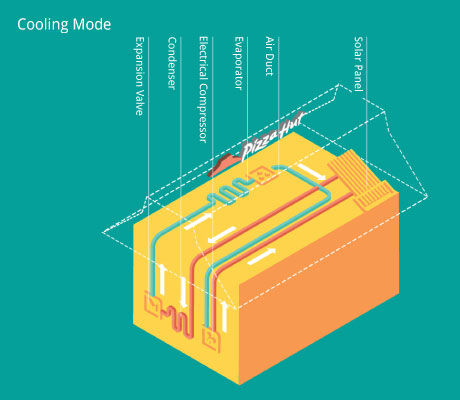How it works
Solar Thermodynamic Assisted Refrigeration and Air Conditioning
How it works...
Imagine you have an aircraft that is designed to fly at only one speed; 500 km/h. Of course this is ridiculous as all aircraft fly at variable speeds, however for the purpose of this explanation let’s imagine this for a moment.
While flying the aircraft, you experience a very strong tail wind of 100 km/h. This would push the aircraft to 600 km/h, dependent on the design:
Uncontrolled ‘systems’
In this case we have an aircraft that is designed to fly at only one speed of 500 km/h, nothing more, nothing less. As you would expect from a single fixed speed (on/off) compressor. You have the potential to push the aircraft to a speed of 600 km/h, however you can’t because the aerodynamics are not capable of this speed, and you can’t reduce the acceleration because it’s fixed. So you had the potential, but were not able to realise it.Controlled ‘systems’
Now we have an ‘engine’ with variable speed so we can now reduce the acceleration. Reducing down to 400 km/h plus the tail wind of 100 km/h we still achieve a total speed of 500 km/h, but we are now saving huge amounts of gas.This is exactly what solar thermal does. We use an engine (the compressor), which has the ability to slow down in variable or staged modes, simply because the tail wind (Solar Thermal Collection System) allows the engine to achieve the original speed (cooling capacity) without the additional fuel consumption.

Thermodynamics of SolarCool
The well-known compressor technology is enhanced with a proprietary developed solar thermal collection system. We now have a super advanced compressor system. The 'trick' lies in the use of the ideal gas law...

